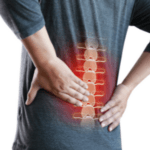By applying the CE marking and providing the associated EU Declaration of Conformity (DoC), a manufacturer or importer is confirming that a machine meets the requirements of all applicable EU Directives. However, misconceptions about CE marking mean that it is one of the most misunderstood requirements. Neil Dyson explains some of the common pitfalls to avoid and ensure machinery compliance.
The DoC is a formal statement that a machine complies with applicable directives and standards. It must be signed by the responsible person within the organisation and that signatory may be subject to prosecution if the equipment is found not to comply.
The DoC must include:
- name and address of the manufacturer (or their authorised representative);
- description of the product – including type, model and any other information that clearly relates the equipment to the declaration;
- reference to the standards applied; and
- identification of the signatory.
Demonstrating compliance
An essential element in demonstrating that CE marking requirements have been met is the production of a technical construction file (TCF), which must conform to the provisions set out in the machinery directive.
Annex VII of the machinery directive states, in paragraph 1(a), that the TCF must now include “documentation on risk assessment” demonstrating the procedure followed, including:
- a list of the essential health and safety requirements (EHSRs) which apply to the machinery,
- the description of the protective measures implemented to eliminate identified hazards or to reduce risks and, when appropriate, the indication of the residual risks associated with the machinery”.
In addition, EHSR 1.1.2 states “machinery must be designed and constructed so that it is fitted for its function, taking into account foreseeable misuse” and “the aim of measures taken must be to eliminate any risk throughout the foreseeable lifetime of the machinery”.
Software has been designed for machinery compliance risk management, taking much of this headache away, but it is essential that it is the latest version that reflects current legislation.
Modifications
Any substantial changes to machinery, such as upgrades or if it is interlinked with other equipment as part of an assembly, may make the existing DoC invalid. This could therefore necessitate a new conformity assessment, even if the machinery was originally compliant with CE marking when it was first purchased and put into service.
There are two key areas of guidance to help machinery end-users identify if the modifications they have made will be considered substantial by the regulatory authorities.
The first is the Health & Safety Executive, which outlines the different situations involving modifications to machinery where the requirements of the Machinery Directive are likely to apply and action must be taken:
- machinery is modified so much that it should be considered as ‘new’ machinery;
- machinery refurbishment with a different safety package;
- an existing assembly of machines is modified; and
- machinery modified before it is first put into service.
A second reference guide is the CEOC International document ‘Modification of Machinery in Service – Guide for Inspection’, which gives clear guidance on what constitutes a ‘non substantial’ and a ‘substantial’ modification.
Fixed installations
In order to carry the CE marking and comply with the Machinery Directive, any machine that has EMC sensitive electrical or electronic components must meet the requirements of the EMC Directive (2004/108/EC).
The only machines that are not subject to conformity assessment with the essential requirements of the EMC Directive are fixed installations. Often the presumption is that if machinery is screwed to the floor it can be considered a fixed installation. However, if such a machine, or assembly of machines into a production line, is moved and modified at any time, it ceases to become a fixed installation.
It is therefore very rare that something that is presumed to be a fixed installation actually is and we regularly see this misunderstanding when we make site visits. A best practice approach would be to err on the side of caution and conduct onsite pre-compliance EMC tests for machinery, even if it could possibly fall within the fixed installation definition.
The CE marking is a visible sign that a machine complies with all the relevant standards and directives. It is therefore essential that manufacturers understand how to apply the vast range of possible relevant standards and directives to machinery, in order to ensure both compliance and the saleability of equipment destined for the European market.
 Neil Dyson, is business line manager for machinery safety at TÜV SÜD product service, a global product testing, inspection and certification organisation.
Neil Dyson, is business line manager for machinery safety at TÜV SÜD product service, a global product testing, inspection and certification organisation.
Approaches to managing the risks associated Musculoskeletal disorders
In this episode of the Safety & Health Podcast, we hear from Matt Birtles, Principal Ergonomics Consultant at HSE’s Science and Research Centre, about the different approaches to managing the risks associated with Musculoskeletal disorders.
Matt, an ergonomics and human factors expert, shares his thoughts on why MSDs are important, the various prevalent rates across the UK, what you can do within your own organisation and the Risk Management process surrounding MSD’s.

 Neil Dyson, is business line manager for machinery safety at TÜV SÜD product service, a global product testing, inspection and certification organisation.
Neil Dyson, is business line manager for machinery safety at TÜV SÜD product service, a global product testing, inspection and certification organisation.